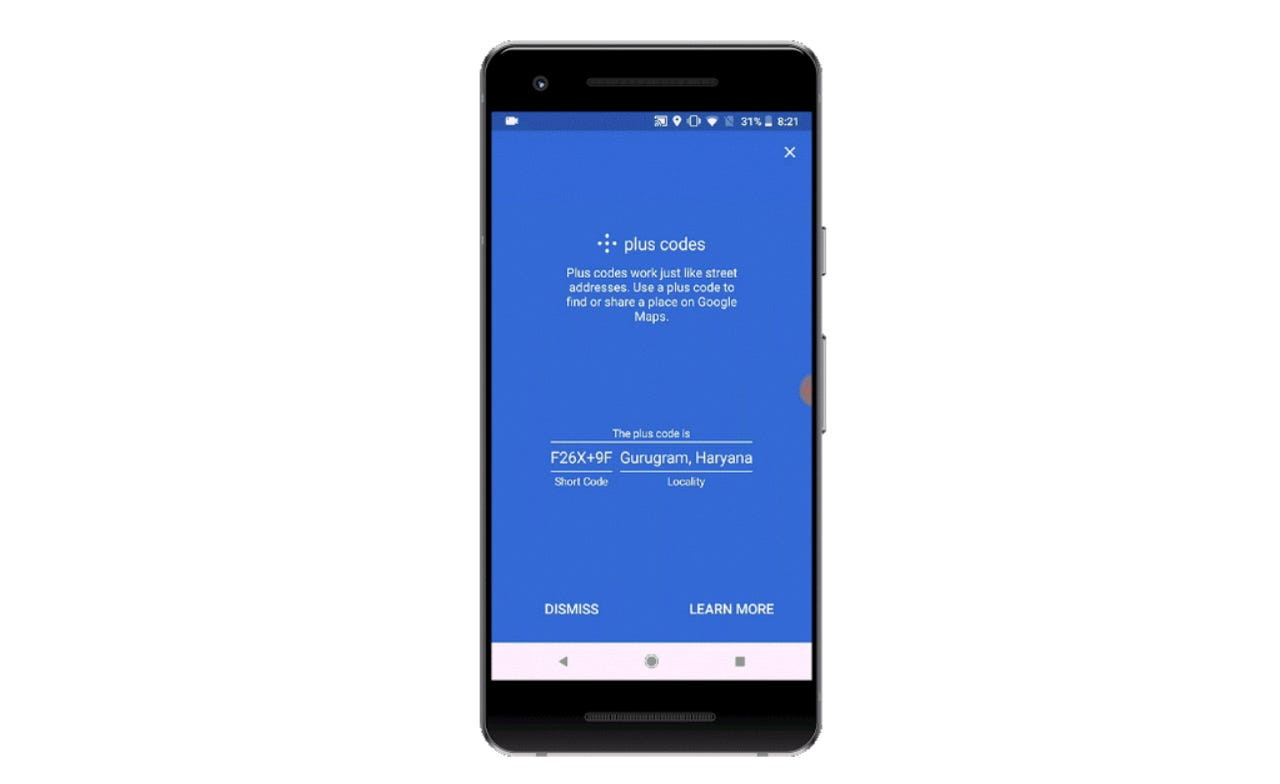Google adds plus codes support for remote areas


Google Maps has added support for plus codes, an open-source addressing system that generates simplified street addresses for people or places that don't have one.
The plus code system divides the geographical surface of the Earth into what Google calls "tiled areas" and gives each a unique code, comprised of six characters, a "+" symbol, and the name of the city, such as F26X+9F Gurugram.
Users can drop a pin anywhere on Maps and will be given the code. Each code can be shared and then searched by anyone with the desktop or mobile Maps by entering it in the search field.
The global capability offers an alternative to "long-winded" addresses and will allow users to better locate places in remote areas in countries such as India that don't have addresses at all, director of program management for Google Maps Suren Ruhela said in a blog post.
Last year, the search giant announced it would be rolling out a new look for the driving, navigation, transit and explore views in Maps to display relevant information more prominently. It also added a search capability for Android that lets users ask or answer questions under local business listings, as well as street-level pollution data across parts of California after a two-year-long mapping exercise.
The search giant has also recently added updates to its Flights booking service that uses a machine learning algorithm to give passengers pre-flight information predictions.
PREVIOUS AND RELATED COVERAGE
<="" p="" rel="follow">
- <="" p="" rel="follow"> <="" p="" rel="follow">
<="" p="" rel="follow">
<="" p="" rel="follow"> <="" p="" rel="follow">Google to ban cryptocurrency, ICO adverts
Initial Coin Offerings, wallets, and consultancy services are all included in the blanket ban.
What Google is learning about user experience
'We're living in the golden age of user experience.' But it takes an enterprise to deliver superior UX.
Nokia, Huawei strike multi-year patent licensing deal
Specifics of the deal aren't being disclosed, but Huawei will now have access to a slew of mobile patents.
Google Maps: Here's how its new look will adapt to the way you're traveling
Google Maps is adding more icons and changing the places of interest it highlights in various modes.
Google Maps for iOS update could make it easier to get to work on time(TechRepublic)
The Google Maps feature, which brings in real-time commute data, launched on Android a year ago.
New Google Maps tool helps business travelers navigate public transportation(TechRepublic)
The app will alert users when their train or bus has reached their stop, along with ETA updates.